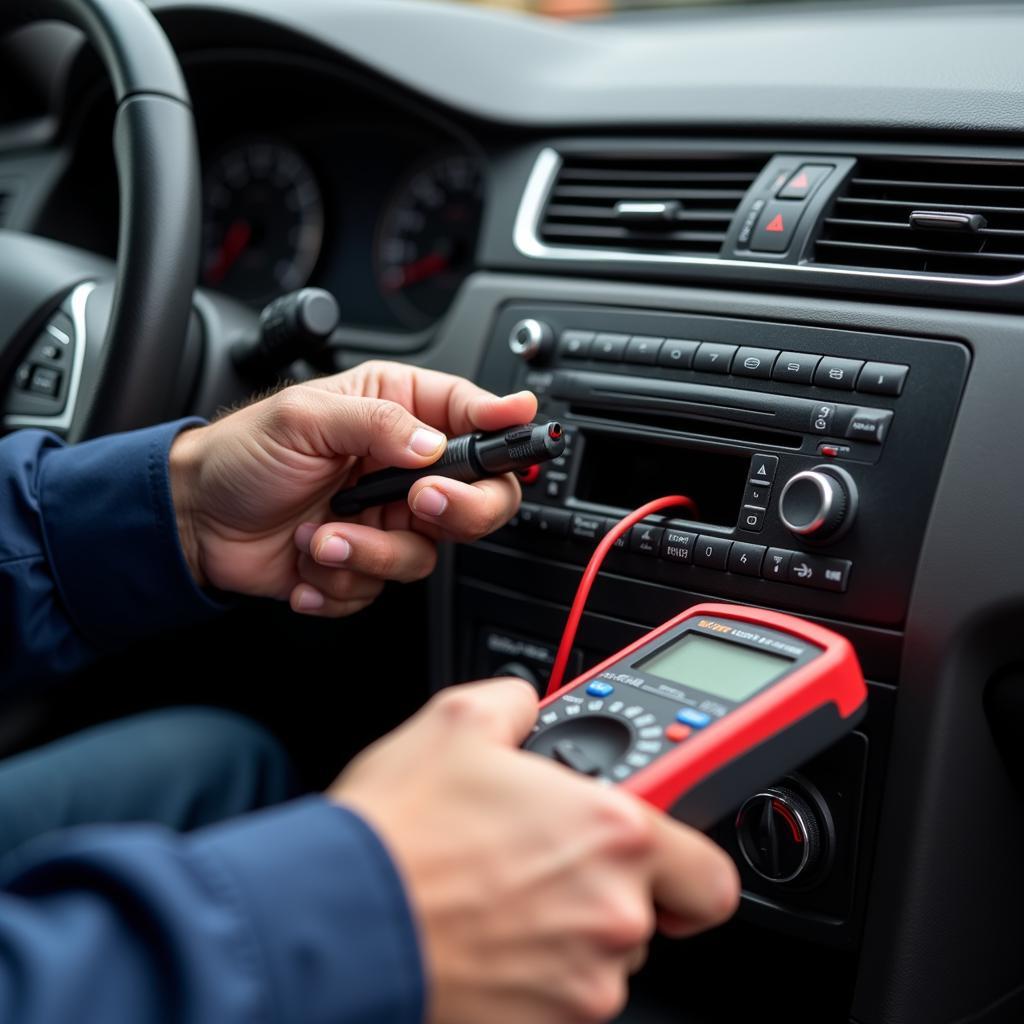Few things are more frustrating than a car power window that won’t roll up, especially on a hot or rainy day. Whether your window is stuck, making a grinding noise, or simply refusing to budge, this guide will provide you with everything you need to know about car power window repair.
Understanding Your Car’s Power Windows
Power windows are a standard feature in most modern vehicles, providing convenience and comfort. But like any other mechanical system, they can encounter issues over time. The most common culprits are:
- Window Regulator: This mechanism is responsible for lifting and lowering the window glass. A worn-out cable, broken pulley, or bent regulator arm can cause malfunctions.
- Window Motor: This motor provides the power to move the regulator. A burnt-out motor will leave your window stranded.
- Window Switches: Located on the driver’s door and sometimes on passenger doors, these switches control the flow of electricity to the motor. Worn contacts or a faulty switch can prevent the window from operating.
- Wiring Issues: Damaged wires or loose connections between the switch, motor, and battery can interrupt the power supply.
Common Power Window Problems and Their Causes
Identifying the specific problem with your power window is crucial for effective repair. Here are some common symptoms and their likely causes:
1. Window Won’t Move At All:
- Blown Fuse: A sudden power surge or short circuit can blow the fuse dedicated to your power windows.
- Dead Motor: If you hear no sound when engaging the switch, the motor might have failed.
- Disconnected Wiring: An impact or loose connection could have disrupted the electrical pathway.
2. Slow Window Movement:
- Worn Regulator: Over time, the cables or gears within the regulator can wear down, causing sluggish operation.
- Weak Motor: A weakening motor may struggle to lift the window, especially in older vehicles.
- Binding Window Channels: Dirt, debris, or rust in the window tracks can create friction, hindering smooth movement.
3. Grinding or Clicking Sounds:
- Damaged Regulator: A broken pulley or worn-out cable in the regulator will often produce noticeable noises.
- Obstructed Window: An object lodged in the window track can cause grinding as the window tries to move.
4. Window Slips Down:
- Worn Regulator: If the window doesn’t stay up, a faulty regulator unable to hold the glass in place is a likely cause.
car power window repair near lomita ca
Troubleshooting Power Window Problems
Before heading to a mechanic, you can attempt some basic troubleshooting:
- Check the Fuse Box: Refer to your owner’s manual to locate the power window fuse and inspect it for any breaks.
- Inspect the Switches: Make sure the switches are clean and free of debris that could be obstructing the electrical contacts.
- Listen Carefully: Pay attention to any unusual noises when operating the window to help pinpoint the source of the problem.
When to Seek Professional Repair
While simple issues like a blown fuse can be DIY fixes, more complex problems often require professional expertise.
“Attempting to repair a power window mechanism without proper knowledge can lead to further damage or even injury,” warns John Smith, a seasoned automotive electrician with over 20 years of experience. “It’s always best to consult a qualified mechanic, especially if you suspect issues with the motor, regulator, or wiring.”
car power window repair melbourne fl
Car Power Window Repair Cost
The cost of car power window repair can vary significantly depending on the make and model of your vehicle and the severity of the problem. Here’s a general estimate:
- Window Regulator Replacement: $150 – $400
- Window Motor Replacement: $100 – $300
- Window Switch Replacement: $50 – $200
- Wiring Repair: $50 – $200 (or more for extensive damage)
car power window repair orlando fl
Tips for Preventing Power Window Problems
- Regular Cleaning: Keep the window tracks clean and free of dirt, debris, and lubrication buildup.
- Avoid Forcing: Never force a stuck window. Trying to force it can damage the motor, regulator, or glass.
- Address Issues Promptly: Ignoring minor issues can lead to more significant and costly problems down the line.
Conclusion
Car power windows provide convenience but require proper care and maintenance. Understanding the common causes of power window problems, along with some basic troubleshooting tips, can help you address issues effectively and keep your windows rolling smoothly for years to come. Remember, when in doubt, always consult with a qualified car power window repair professional.
car power window repair richmond va
FAQs
Q: How long does it take to replace a car power window motor?
A: Replacing a power window motor typically takes 1-2 hours, depending on the vehicle’s make and model.
Q: Can I drive my car with a broken power window?
A: While you can technically drive with a broken power window, it’s not advisable. A stuck window poses security risks and leaves your car vulnerable to theft and weather elements.
Q: How often should I lubricate my car windows?
A: It’s a good practice to lubricate your car window tracks every six months or as needed, especially if you live in an area with harsh weather conditions.
Q: Are power window problems covered under warranty?
A: Whether or not power window repairs are covered under warranty depends on your vehicle’s specific warranty terms and the cause of the problem.
car power window repair el paso tx
Q: What is the common lifespan of a car power window regulator?
A: The lifespan of a power window regulator varies, but they typically last between 5-10 years, depending on usage and environmental factors.


